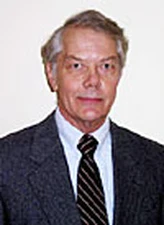Charles W. Carlson

The 2007 Hannes Alfvén Medal is awarded to Charles W. Carlson for his pioneering work in developing novel diagnostic instruments and whole payloads leading to a major increase in our knowledge of the complexities of space and, in particular, auroral plasmas.
Charles W. Carlson received his PhD in physics from the University of California, Berkeley (UCB) in 1974 and has been a Research Physicist and Senior Space Fellow at the Space Sciences Laboratory of the same university since then. From 2000 onward he has been Associate Director of the Laboratory.
Dr. Carlson’s unique role in space plasma physics is based on his ingenious design of highly advanced diagnostic instrumentation, on the huge success of his sounding rocket projects and the FAST satellite mission, and on the guidance he provided to the community through data interpretation and theory in unraveling the complex processes of auroral plasma physics. His outstanding invention, in the early eighties, was the top-hat plasma analyzer. It has become the de-facto standard for plasma particle measurements on many satellite missions besides FAST, e.g. AMPTE and Cluster, due to its uniform response and extraordinary angular resolution. On FAST, it enabled the unequivocal and quantitative proof that that the auroral electron and ion beams are the result of electric potential drops along the geomagnetic field lines, the discovery of the organization of the auroral physics by the global magnetospheric upward/downward current systems, and the clarification of the mechanism for the generation of the auroral kilometric radiation. On AMPTE, an instrument of that design led to the discovery of the “bursty bulk flows” in the magnetospheric tail during substorms. Through his strong involvement in the sounding rocket program, Dr. Carlson has also taught a whole generation of graduate students the art of instrument building and data interpretation, the importance of which for the future of the field of space plasma physics cannot be overestimated. Dr. Carlson is author or coauthor of nearly 300 refereed publications.
